Formwork studs

The method of using removable formwork in the erection of monolithic structures from a concrete mixture presupposes the presence of reliable fasteners that connect parallel shields to each other and fix them at the required distance. These functions are performed by a set of tie rods (it is also called tie bolt, screw, formwork tie) with 2 nuts tightened from the outside, PVC tube and stoppers (clamps). The hairpin supports the boards in a certain plane together with the external supports, provides casting within the design thickness and withstands various dynamic external influences.
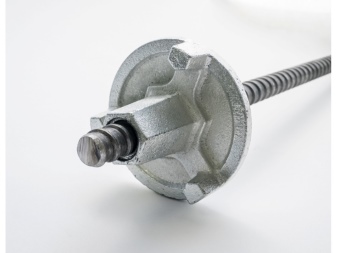

Characteristic
The tie rod takes all the load when pouring concrete into the wall formwork.
Tightening screws have typical dimensions: 0.5, 1, 1.2, 1.5 meters. The maximum length is 6 meters. When choosing this screed, it is required to take into account the thickness of the wall into which the concrete solution is poured.
Structurally, the clamping screw is a round stud with an outer diameter of 17 millimeters. From 2 sides, specialized formwork nuts with a similar parameter from 90 to 120 millimeters are screwed onto it. There are 2 types of nuts for formwork systems: wing nuts and hinged nuts (super plate).
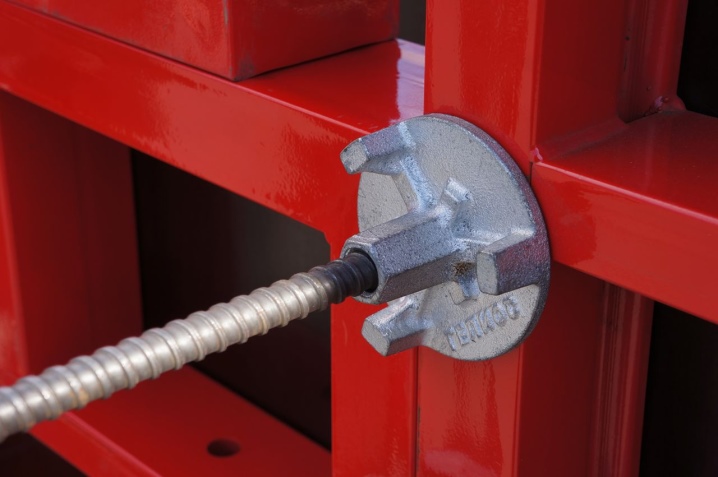
The use of a clamping screw for the formwork system makes it possible to use it repeatedly. The service life of the product is not limited. The kit contains plastic cones and PVC (polyvinyl chloride) tubing. Such elements are necessary to protect the screed from the effects of the concrete mix and provide free removal of the tie rod from the structure.
A specially created structure, namely the thread on the studs and nuts, contributes to tightening, and unwinding, even when a crumb of concrete or sand gets in, does not occur.
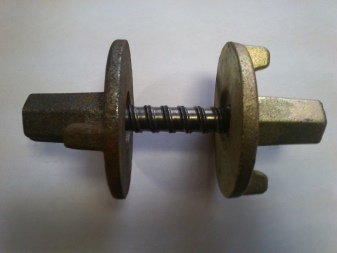
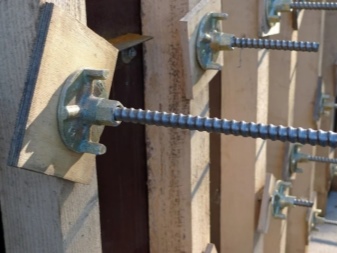
The tie rod for the contour of monolithic concrete structures is a product that can withstand the mass of the object being erected and all dynamic external influences. The solidity of the structure depends on the strength of this part. The main area of application is the construction of concrete and reinforced concrete walls for industrial facilities and residential buildings, columns, floors, foundations. The tie rod is required to mount the structural elements of the formwork system, it is responsible for the interface of the panels and the rigidity.
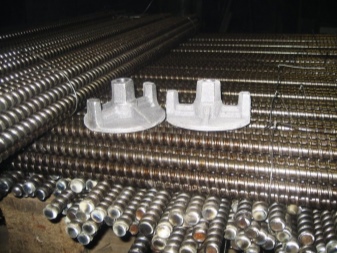
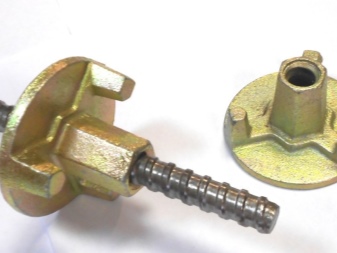
The considered pins for formwork are made from alloy steels by cold or hot rolling (knurling) of the thread. Steel has high strength and is able to withstand significant force effects (from the weight of the concrete).
They are always used in combination with other types of threaded fasteners: nuts, as well as a PVC tube (for fastening the formwork). Produced in the form of a solid 3-meter long hairpin:
- diameter of the outer thread chamfer - 17 millimeters;
- diameter along the internal chamfer of the thread - 15 millimeters;
- the distance between the threads of the thread - 10 millimeters;
- the mass of one running meter is 1.4 kilograms.
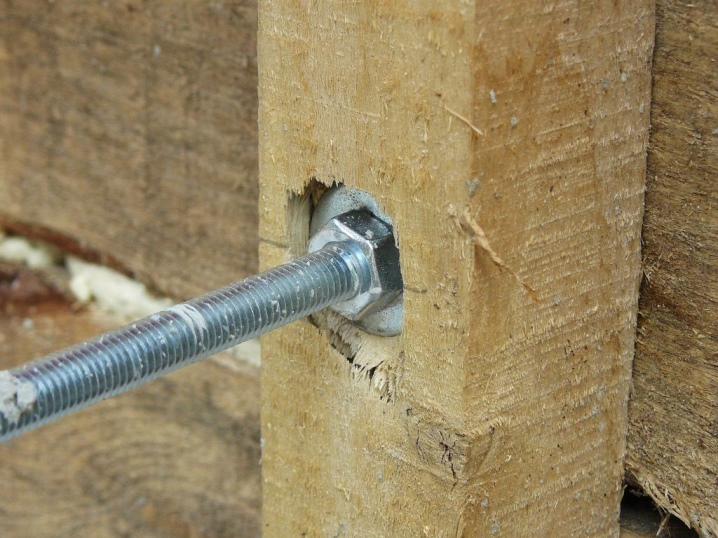
Views
There are 2 types of tie rods for the formwork system.
- Type A. The stud has equal diameters in the threadless and threaded sections.
- Type B. The hairpin has a smaller diameter of the threadless area and an increased diameter of the threaded part.
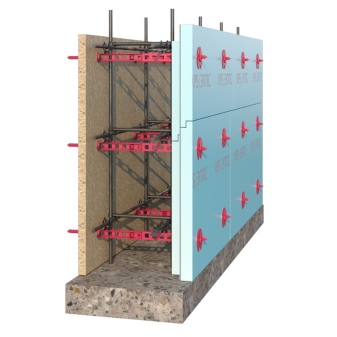
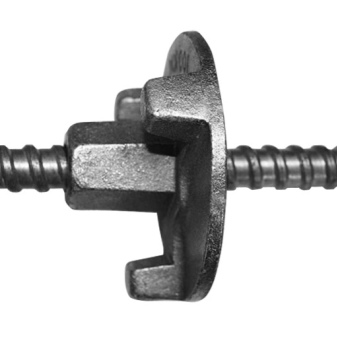
In addition to steel screws, other types of products are also practiced when constructing a formwork structure.
- Fiberglass tie bolts. These products are characterized by low thermal conductivity and low shear resistance. Basically, these elements are disposable, they are cut during the dismantling of the formwork systems and are not removed from the concrete structures.
- Plastic screed for formwork is characterized by an acceptable cost. An ordinary plastic screed is used for the installation of molds for casting structures with a width of no more than 250 millimeters. When installing forms for wider structures (up to 500 millimeters), a plastic extension is used in parallel with the screed.

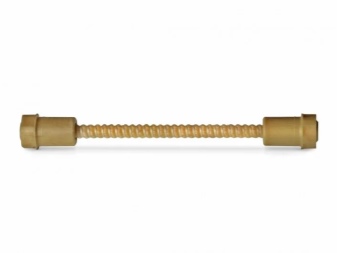
Application
The formwork screed is used for the installation of parallel panels of the formwork structure, as a result of which, after pouring the concrete solution, they do not spread out to the sides. In this regard, the tightening bolt must withstand significant external influences, resisting the pressure of the concrete solution.
As already stated, 2 nuts help to tighten and fix the formwork panels; they are installed on the outer sides of the panels to be connected. The surface area of the nut is 9 or 10 centimeters, therefore, a tight abutment to the surface of the shields is achieved.
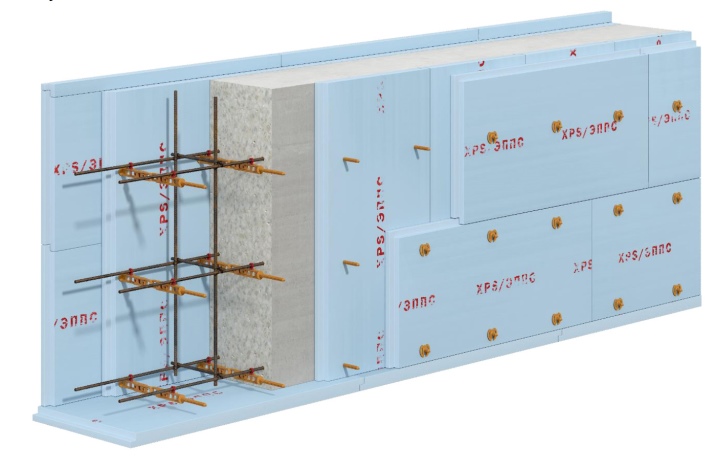
With significant loads of this area, the abutment becomes small, therefore, auxiliary washers are installed.
Studs are used for the installation of the formwork system in the construction of monolithic structures. Such fasteners are quite expensive, for this reason they are used repeatedly. In other words, after the concrete has hardened, the formwork is dismantled, the tie screws are removed and rearranged to a new place.
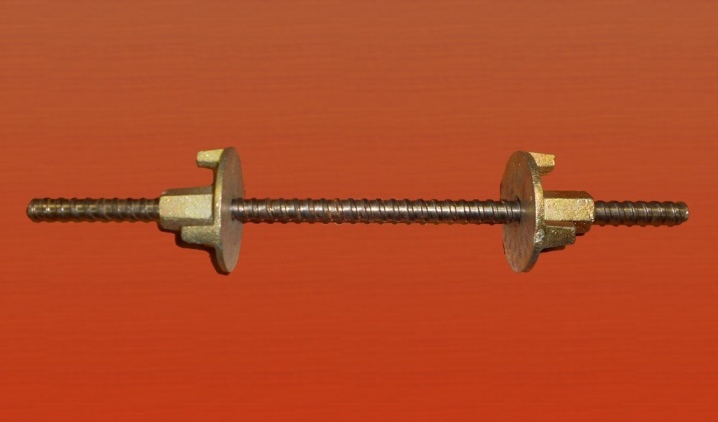
Installation features
When installing the formwork system, the following steps are taken:
- in the sides, holes are prepared for mounting PVC pipes;
- pins are placed in the PVC tubes, in length they must be much larger than the width of the formwork panels so that there is room for fixing the nuts;
- shields are equal, studs are fixed with nuts;
- forms are filled with concrete;
- after the solution has solidified (not less than 70%), the nuts are unscrewed, and the studs are pulled out;
- PVC tubes remain in the body of the concrete structure, the holes can be closed with specialized plugs.
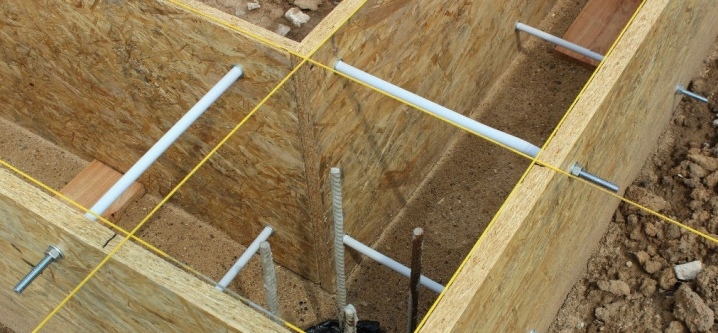
Due to the use of PVC tubes, the structure can be easily disassembled, and the studs can be used repeatedly, reducing construction costs.
Tying the formwork with screws guarantees the strength of the structure, moreover, installation and disassembly are carried out with the least time and labor costs. You do not need to be a qualified technician to carry out the installation.
A positive point is the versatility of the fastening material, it can be used for small volumes of work and for large-scale construction.
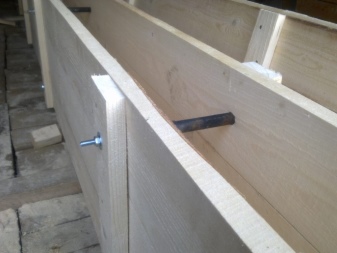
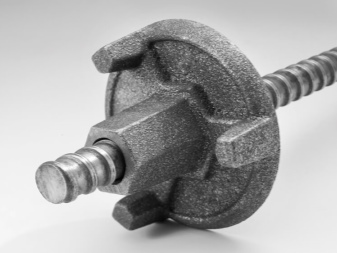













The comment was sent successfully.